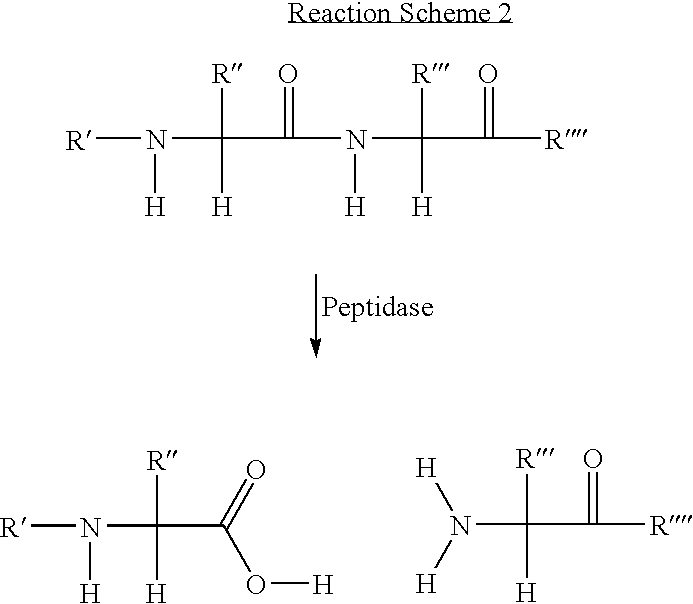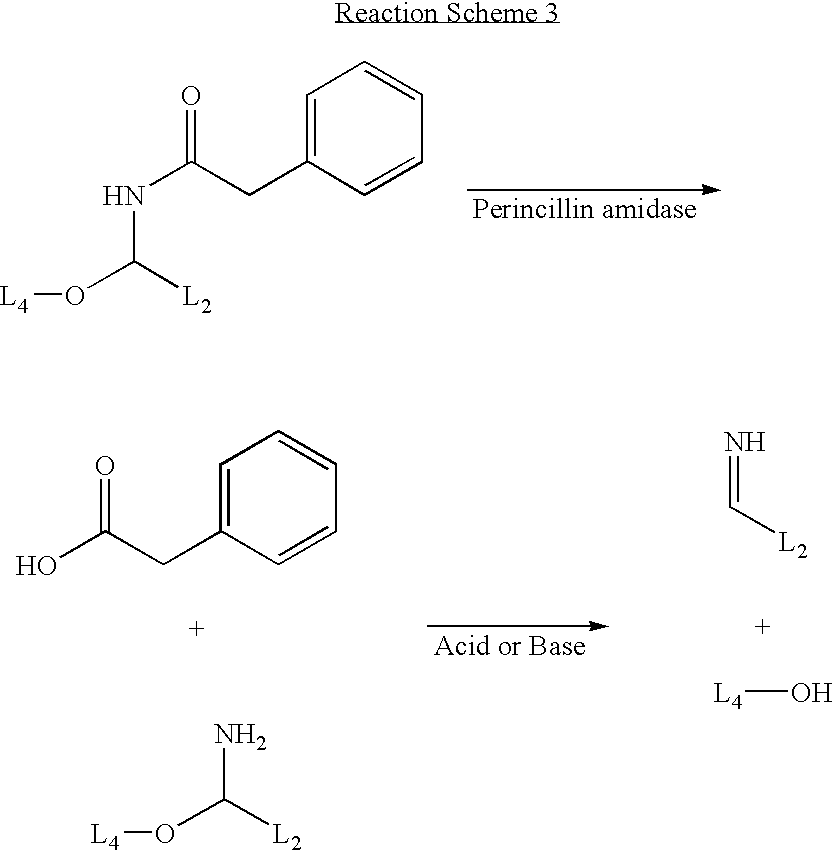Nucleotide analogues
a technology of nucleosides and analogues, applied in the field of nucleosides and nucleotide analogues, can solve the problems of affecting the fidelity of the polymerase enzyme,
- Summary
- Abstract
- Description
- Claims
- Application Information
AI Technical Summary
Benefits of technology
Problems solved by technology
Method used
Image
Examples
example 1
[0084] A reaction scheme for the synthesis of an example of a compound of Formula I containing a peptide-based linker is set out in FIG. 1.
i) 5-N-(N-Trifluoroacetyl-β-alanyl)propargylamino-2′-deoxyuridine (2)
[0085] 5-Propargylamino-2′-deoxyuridine (1) (1.3 g, 4.6 mmol) and N-trifluoroacetyl-β-alanine succinimidyl ester (1.29 g, 4.6 mmol) were dissolved in DMF (100 mL) at ambient temperature. Triethylamine (0.46 g, 0.6 ml 4.6 mmol) was added and the solution stirred overnight at ambient temperature. The solvent was then removed under vacuum. The residue was then re-dissolved in dichloromethane:methanol (1:1) and eluted through a flash silica gel column (dichloromethane: methanol, 9:1). Removal of solvent from the appropriate fractions (Rf0.1, dichloromethane:methanol 9:1) afforded the title compound as a white foam (0.7 g, 34%). 1HNMR (300 MHz, d6-DMSO) δ 11.62 (1H, s, N3—H), 9.48 (1H, t, br, CF3CONH), 8.48(1H, t, J5.4 Hz, propargyl NH), 8.15 (1H, s, H-6), 6.09 (1H, app t, J6.6 Hz,...
example 2
Protease Mediated Cleavage of 5-N-[N-(6-Fluorescein-5(and-6)carboxamidohexanoyl)-Gly-Gly-Leu-β-alanyl]-propargylamino-2′-deoxyuridine (FamHex-GGL-β-A2′dU)
[0091]FIG. 2 shows the hydrolytic cleavage of FamHex-GGL-β-A2′dU (6) by the proteolytic enzyme, subtilisin. Compound 6 is readily digested by subtilisin (Subtilopeptidase A, type VIII, Sigma Chemical Company, UK), which cleaves at the leucine residue, following 2 hours incubation at 37° C. at pH 7.5 to yield the nucleoside and dye-labelled products shown.
example 3
Synthesis of a Nucleotide with a Penicillin Amidase Cleavable Linker
[0092]FIG. 3 shows a reaction scheme for the preparation of a nucleotide with a penicillin amidase cleavable linker.
[0093] 5-Hydroxymethyl-5′,3′-di-O-toluyl-2′-deoxyuridine (7) (prepared using established procedures (T. Ueda, Chemistry of Nucleosides and Nucleotides, Vol. 1.Ed. L. B. Towensend) and N-[α-thioethyl-N′-trifluoroacetylaminopropyl benzamide]phenylacetamide (8) (Flitsch et al., Tetrahedron Letters 1998, 39, 3819-3822 and references cited therein; Flitsch e al. WO 97 / 20855) may be combined in the presence of N-iodosuccinimide to give compound (9). Compound (9) may be converted to the intermediate (10) by treatment with sodium methoxide in methanol, followed by ethyl trifluoroacetate in methanol. Conversion of the nucleoside (10) to a triphosphate (11) may be achieved by using established triphosphate synthesis conditions (For examples see K. Burgess, D. Cook. Chem. Rev. 2000, 100, 2047-2059 and reference...
PUM
| Property | Measurement | Unit |
|---|---|---|
| temperatures | aaaaa | aaaaa |
| temperatures | aaaaa | aaaaa |
| pH | aaaaa | aaaaa |
Abstract
Description
Claims
Application Information
 Login to View More
Login to View More - R&D
- Intellectual Property
- Life Sciences
- Materials
- Tech Scout
- Unparalleled Data Quality
- Higher Quality Content
- 60% Fewer Hallucinations
Browse by: Latest US Patents, China's latest patents, Technical Efficacy Thesaurus, Application Domain, Technology Topic, Popular Technical Reports.
© 2025 PatSnap. All rights reserved.Legal|Privacy policy|Modern Slavery Act Transparency Statement|Sitemap|About US| Contact US: help@patsnap.com



